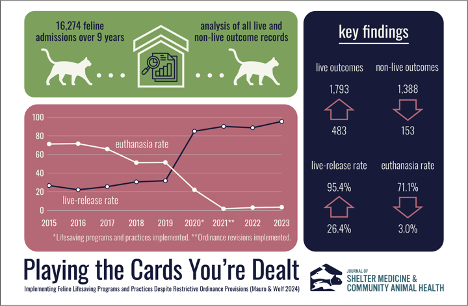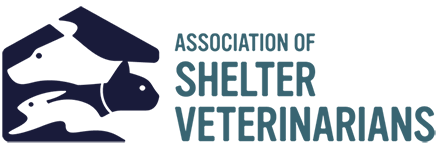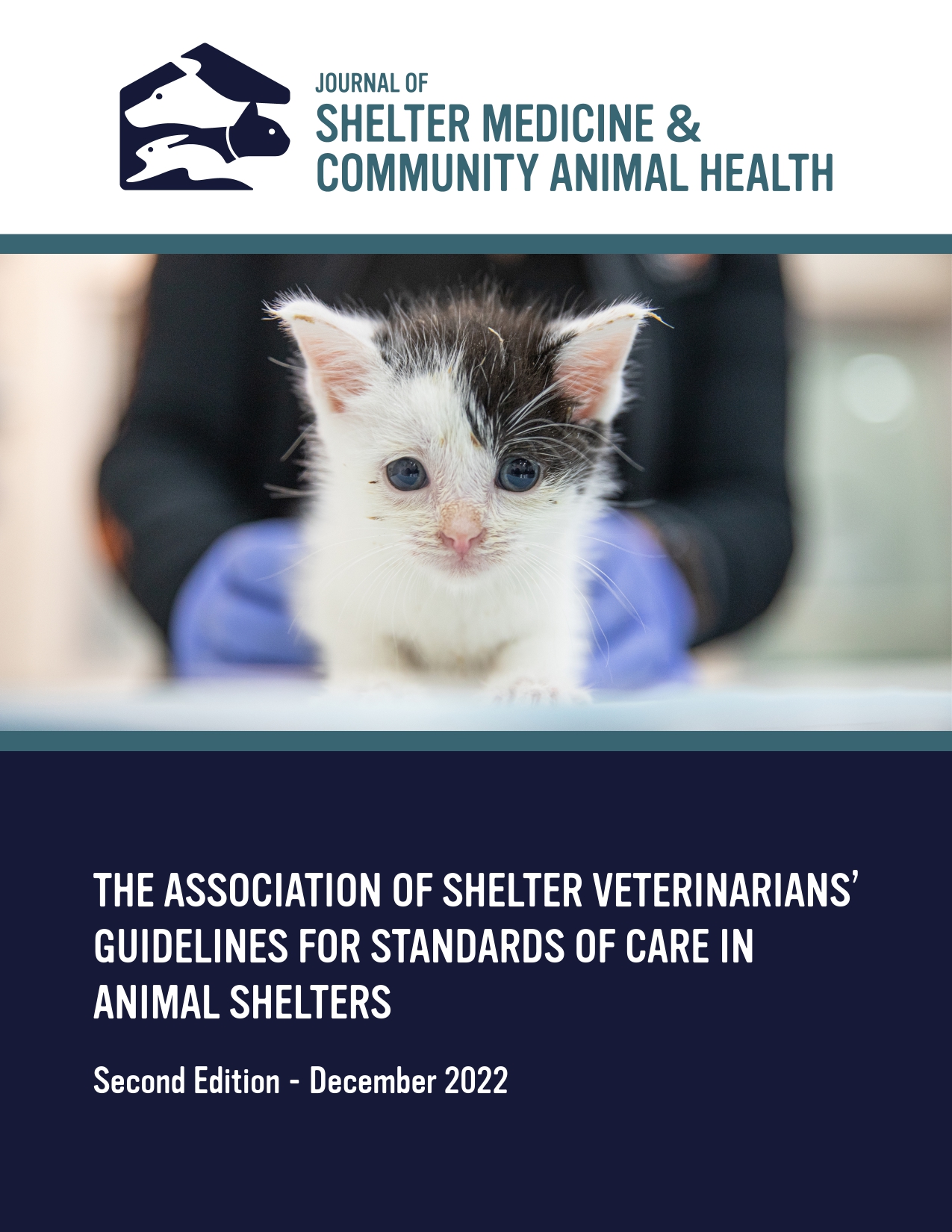Playing the Cards You’re Dealt: Implementing Feline Lifesaving Programs and Practices Despite Restrictive Ordinance Provisions
DOI:
https://doi.org/10.56771/jsmcah.v3.49Keywords:
animal shelter, community cats, live-release rate, public policy, trap-neuter-returnAbstract
Trap-neuter-return (TNR) programs enjoy strong public support in the U.S. These programs have been shown to successfully increase live release rates and decrease euthanasia rates of cats in animal shelters. However, local laws can impede the implementation of TNR programs. In cooperation with St. Tammany Parish Department of Animal Services, this community case study describes the results of various programs and practices implemented to increase feline lifesaving despite restrictive ordinance provisions, as well as those associated with subsequent ordinance revisions. The St. Tammany Parish Department of Animal Services provided detailed data for the period of January 2015 through December 2023 (e.g. intake, live outcomes, and euthanasia) and information regarding various programs and practices related to feline lifesaving. The data was then examined for general trends. In addition, St. Tammany Parish’s Ordinance No. 21-4618, which includes both the original provisions and revised provisions, was examined for those likely to affect the shelter’s feline admissions and outcomes. The data suggests that the programs and practices implemented were associated with considerable increases in live outcomes for cats (from 26.4 to 95.4%) and corresponding reductions in euthanasia rates (from 71.1 to 3.0%). The adoption of revised ordinance provisions to reduce barriers for community cat management was associated with relatively little change; however, these provisions were generally positive in nature, removing an apparent requirement to impound at-large cats and facilitating the operation of a community cat program (CCP). This community case study illustrates the potential for animal shelters to substantially improve feline lifesaving regardless of possible legal impediments.
Downloads
References
Wolf PJ, Schaffner JE. The Road to TNR: Examining Trap-Neuter-Return Through the Lens of Our Evolving Ethics. Front Vet Sci. 2019;5:341. doi: 10.3389/fvets.2018.00341
Hawes S, Ikizler D, Loughney K, Tedeschi P, Morris K. Legislating Components of a Humane City: The Economic Impacts of the Austin, Texas ‘No Kill’ Resolution (City of Austin Resolution 20091105-040). Institute for Human-Animal Connection, Graduate School of Social Work, University of Denver; 2017.
Rodriguez JR, Davis J, Hill S, Wolf PJ, Hawes SM, Morris KN. Trends in Intake and Outcome Data From U.S. Animal Shelters From 2016 to 2020. Front Vet Sci. 2022;9:863990. doi: 10.3389/fvets.2022.863990
Wolf PJ, Hamilton F. Managing Free-Roaming Cats in U.S. Cities: An Object Lesson in Public Policy and Citizen Action. Journal of Urban Affairs. 2020;44(2):221–242. doi: 10.1080/07352166.2020.1742577
Berkeley EP. TNR Past Present and Future: A History of the Trap-Neuter-Return Movement. Alley Cat Allies; 2004.
Spehar DD, Wolf PJ. Integrated Return-to-Field and Targeted Trap-Neuter-Vaccinate-Return Programs Result in Reductions of Feline Intake and Euthanasia at Six Municipal Animal Shelters. Front Vet Sci. 2019;6(77). doi: 10.3389/fvets.2019.00077
Johnson KL, Cicirelli J. Study of the Effect on Shelter Cat Intakes and Euthanasia from a Shelter Neuter Return Project of 10,080 Cats from March 2010 to June 2014. PeerJ. 2014;2:e646. doi: 10.7717/peerj.646
Spehar DD, Wolf PJ. The Impact of Return-to-Field and Targeted Trap-Neuter-Return on Feline Intake and Euthanasia at a Municipal Animal Shelter in Jefferson County, Kentucky. Animals. 2020;10(8):1395. doi: 10.3390/ani10081395
Stoskopf MK, Nutter FB. Analyzing Approaches to Feral Cat Management—One Size Does Not Fit All. J Am Vet Med Assoc. 2004;225(9):1361–1364. doi: 10.2460/javma.2004.225.1361
Natoli E, Maragliano L, Cariola G, et al. Management of Feral Domestic Cats in The Urban Environment of Rome (Italy). Prev Vet Med. 2006;77(3–4):180–185. doi: 10.1016/j.prevetmed.2006.06.005
Spehar DD, Wolf PJ. A Case Study in Citizen Science: The Effectiveness of a Trap-Neuter-Return Program in a Chicago Neighborhood. Animals. 2018;7(11). Accessed Feb 14, 2024. http://www.mdpi.com/2076-2615/8/1/14
Levy JK, Gale DW, Gale LA. Evaluation of the Effect of a Long-Term Trap-Neuter-Return and Adoption Program on a Free-Roaming Cat Population. J Am Vet Med Assoc. 2003;222(1):42–46. doi: 10.2460/javma.2003.222.42
Spehar DD, Wolf PJ. Back to School: An Updated Evaluation of the Effectiveness of a Long-Term Trap-Neuter-Return Program on a University’s Free-Roaming Cat Population. Animals. 2019;9(10):768. doi: 10.3390/ani9100768
Kreisler RE, Cornell HN, Levy JK. Decrease in Population and Increase in Welfare of Community Cats in a Twenty-Three Year Trap-Neuter-Return Program in Key Largo, FL: The ORCAT Program. Front Vet Sci. 2019;6(7). doi: 10.3389/fvets.2019.00007
Tennent J, Downs CT. Abundance and Home Ranges of Feral Cats in an Urban Conservancy Where There Is Supplemental Feeding: A Case Study from South Africa. Afr Zool. 2008;43(2):218–229. doi: 10.3377/1562-7020-43.2.218
Jones AL, Downs CT. Managing Feral Cats on a University’s Campuses: How Many Are There and Is Sterilization Having an Effect? J Appl Anim Welfare Sci. 2011;14(4):304–320. doi: 10.1080/10888705.2011.600186
Tan K, Rand J, Morton J. Trap-Neuter-Return Activities in Urban Stray Cat Colonies in Australia. Animals. 2017;7(6):46. doi: 10.3390/ani7060046
Zaunbrecher KI, Smith RE. Neutering of Feral Cats as An Alternative to Eradication Programs. J Am Vet Med Assoc. 1993;203(3):449–452. doi: 10.2460/javma.1993.203.03.449
Levy JK, Isaza NM, Scott KC. Effect of High-Impact Targeted Trap-Neuter-Return and Adoption of Community Cats on Cat Intake to a Shelter. Vet J. 2014;201(3):269–274. doi: 10.1016/j.tvjl.2014.05.001
Kreisler RE, Pugh AA, Pemberton K, Pizano S. The Impact of Incorporating Multiple Best Practices on Live Outcomes for a Municipal Animal Shelter in Memphis, TN. Front Vet Sci. 2022;9. Accessed Nov 15, 2022. https://www.frontiersin.org/articles/10.3389/fvets.2022.786866
Hamilton F. Implementing Nonlethal Solutions for Free-Roaming Cat Management in a County in the Southeastern United States. Front Vet Sci. 2019;6:259. doi: 10.3389/fvets.2019.00259
Schaffner JE. Community Cats: Changing the Legal Paradigm for the Management of So-Called ‘Pests’. Syracuse Law Rev. 2017;67(1):71–113.
Aeluro S, Buchanan JM, Boone JD, Rabinowitz PM. ‘State of the Mewnion’: Practices of Feral Cat Care and Advocacy Organizations in the United States. Front Vet Sci. 2021;8. Accessed Nov 12, 2022. https://www.frontiersin.org/articles/10.3389/fvets.2021.791134
Karsten CL, Wagner DC, Kass PH, Hurley KF. An Observational Study of the Relationship between Capacity for Care as an Animal Shelter Management Model and Cat Health, Adoption and Death in Three Animal Shelters. Vet J. 2017;227:15–22. doi: 10.1016/j.tvjl.2017.08.003
Normand CM. Feral Cat Virus Infection Prevalence, Survival, Population Density, and Multi-Scale Habitat Use in an Exurban Landscape. M.S. Arkansas Tech University; 2014.
Wolf PJ, Weedon GR. An Inconvenient Truth: Targeted TNR Enjoys a Track Record Unmatched by Lethal Methods for Managing Free-Roaming Cats. J Shelter Med Community Animal Health. 2023;2(1). doi: 10.56771/jsmcah.v2.68
Boone JD, Miller PS, Briggs JR, et al. A Long-Term Lens: Cumulative Impacts of Free-Roaming Cat Management Strategy and Intensity on Preventable Cat Mortalities. Front Vet Sci. 2019;6(238). doi: 10.3389/fvets.2019.00238
Reese LA. Community Factors and Animal Shelter Outcomes. J Appl Anim Welfare Sci. 2022;27(1):1–19. doi: 10.1080/10888705.2022.2063021
Morris KN, Gies DL. Trends in Intake and Outcome Data for Animal Shelters in a Large U.S. Metropolitan Area, 1989 to 2010. J Appl Anim Welf Sci. 2014;17(1):59–72. doi: 10.1080/10888705.2014.856250
Roman A. The Roles Assumed by Public Administrators: The Link Between Administrative Discretion and Representation. Public Adm Q. 2015;39(4):595–644. doi: 10.1177/073491491503900403
Morton R, Hebart ML, Ankeny RA, Whittaker AL. Assessing the Uniformity in Australian Animal Protection Law: A Statutory Comparison. Animals. 2020;11(35). doi: 10.3390/ani11010035

Published
How to Cite
Issue
Section
License
Copyright (c) 2024 Kailey A. Mauro, Peter J. Wolf

This work is licensed under a Creative Commons Attribution 4.0 International License.








